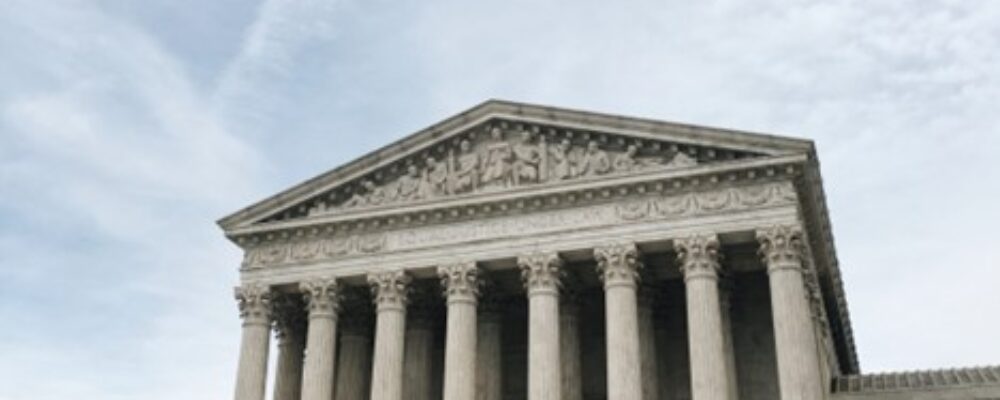
On June 1, 2023, in a resounding 8-1 decision, the United States Supreme Court granted employers an important victory by holding that the National Labor Relations Act and prior precedent did not preempt a state court tort action against a labor organization that sanctioned a work stoppage that was timed deliberately to destroy the employer’s property. By allowing the state court action to proceed, the Supreme Court in Glacier Northwest, Inc. v. Teamsters Local Union No. 174 recognized a significant limit on the National Labor Relations Act’s reach and provided a means for employers to sue in state court for damages arising from conduct not protected by the National Labor Relations Act.
The Union’s Well-Timed Work Stoppage
Glacier Northwest sells and delivers ready-mix concrete in Washington State. Once mixed, concrete begins to harden and remains useable for only a short period of time. This is true even if the concrete is rotating in the drum of a truck. If the concrete hardens inside a drum, it becomes useless and may significantly damage a truck.
Teamsters Local Union No. 174 (“Union”) represents Glacier’s truck drivers. On August 11, 2017, the Union called for Glacier’s truck drivers to engage in a strike. The Union called for the strike to begin at a time it knew a work stoppage would be especially damaging to the employer: after the concrete had been mixed, loaded into trucks and sent out for delivery. Glacier instructed the drivers to complete their deliveries. The Union told the drivers to go on strike. At least nine drivers ignored Glacier and abandoned their trucks with drums full of cement.
Glacier was able to safely dump the concrete and prevent damage to its trucks, but suffered the loss of all the previously-loaded concrete. Glacier filed a state court tort action against the Union, alleging that it had intentionally destroyed the concrete.
In response, the Union sought dismissal of the state court claims on the grounds that they were preempted by the Act and Supreme Court precedent because the drivers’ conduct was “arguably” protected under the Act and, therefore, could only be heard and resolved by the NLRB. The Washington Supreme Court upheld dismissal of the Union’s lawsuit, finding the lawsuit preempted by the Act applying so-called Garmon preemption.
What is Garmon Preemption?
It is well established and uncontroversial that federal law preempts state law when the two come into conflict. However, in 1959, the Supreme Court held in San Diego Building Trades Council v. Garmon that preemption under the Act is broader than other federal statutes and, thus, encompasses situations when the conduct which is the subject matter of the lawsuit is arguably protected or prohibited by the Act. Under Garmon, if a court finds the conduct is arguably covered by the Act, it must dismiss the suit and allow the matter to be exclusively handled by the NLRB; otherwise the suit may proceed.
However, although the right to strike is generally protected by the Act, some excesses – such as violence on the picket line – are not protected.
As is relevant here, the NLRB has held in a line of cases that the Act does not shield strikers who fail to take “reasonable precautions” to protect their employer’s property from foreseeable, aggravated, and imminent danger due to the work stoppage or other activity believed to be protected by the Act.
What Did the Supreme Court Decide in Glacier Northwest?
The Supreme Court applied this principle in this case and held that the Union’s conduct was not protected by Section 7 of the Act because the strike was timed and coordinated by the Union so as to inflict intentional damage to Glacier’s property, in the form of the lost cement and potential damage to the trucks. The majority determined that because such conduct did not meet the “reasonable precautions” test, the conduct was not even “arguably protected” by the Act. Glacier’s suit was therefore not preempted under Garmon and it could proceed on its state law claims.
The Court noted that the Union, as the party asserting preemption, had the burden of proving that the Act arguably protected the contested conduct and putting forth sufficient evidence that the “reasonable precautions” had been made. The Court, accepting the facts as plead by Glacier as true, examined the truck drivers’ conduct and found it was not protected by the NLRA because the Union knew that the concrete was highly-perishable, yet chose a time to strike when the “resulting risk of harm to Glacier’s equipment and destruction of its concrete were both foreseeable and serious.” In other words, the Court viewed the timing of the strike as an affirmative step intended to endanger the employer’s property and thereby rendered the Union’s conduct arguably not protected by the Act.
The Court also rejected the Union’s arguments that its holding would impose special obligations on strikers who handle perishable products, whose loss is always foreseeable. In doing so, the Court emphasized the unique nature of the ready-mix concrete in this situation, where the drivers’ reporting to work prompted the creation of the perishable product. The drivers’ subsequent work stoppage after the concrete was mixed and poured in the truck not only destroyed the concrete, but also placed the cement trucks in harm’s way. Moreover, the Court noted that this analysis looks at the risk of potential harm versus the realization of the same.
Another issue concerned the effect of a parallel NLRB adjudication concerning the Union’s well-timed strike and whether it was protected under the Act. Though Justice Jackson emphasized in her lengthy dissent the NLRB General Counsel’s issuance of an administrative complaint in those parallel proceedings, the Glacier Northwest majority side-stepped the question and noted in a footnote that the question had not been properly briefed before the Court.
What Does Glacier Northwest Mean for Employers?
Glacier Northwest provides employers a greater ability to bring suit in state court to recover damages when employees and/or unions engage in conduct not protected by the Act. The ability to have their claims heard by a state court has several advantages for employers: (1) to bring tort and other state law claims not available under the Act; (2) to recover damages not available under the Act; and (3) to have their case heard in state court rather than by the current Biden NLRB.
What the Court may have done was to move the line between arguably protected conduct and unprotected conduct. Its rationale, that the timing of the strike sought to inflict maximum pain was clearly directed to physical harm, and the Court said that it was not disturbing the Board’s precedent that a union cannot be held responsible if the employer regularly has perishable goods that are lost when employees strike. But there are certainly examples of strikes timed to inflict maximum damage — for example professional athletes striking on the eve of playoffs — which have always been found to be an acceptable tactic in the “economic warfare” sanctioned by the Act. It remains to be seen whether this was just a singular set of facts or whether the Court may have moved the line to include other strike cases involving intentional damage.
Finally, the concurrence authored by Justice Thomas and joined by Justice Gorsuch also shows that there are at least half the necessary votes for the Court to “reexamine whether the law supports Garmon’s ‘unusual’ pre-emption regime.” If the Court were to overrule Garmon and bring preemption under the Act into accord with its standard preemption principles, it would grant employers even greater ability to bring state court actions than under the majority’s holding. Given this possible shift in jurisprudence by the Court, employers may wish to give greater consideration to filing state court actions when beset with potential property damage and to more frequently challenge decisions finding such actions to be preempted by Garmon.
“With approximately 900 lawyers across 17 offices, Seyfarth Shaw LLP provides advisory, litigation, and transactional legal services to clients worldwide.”
Please visit the firm link to site




